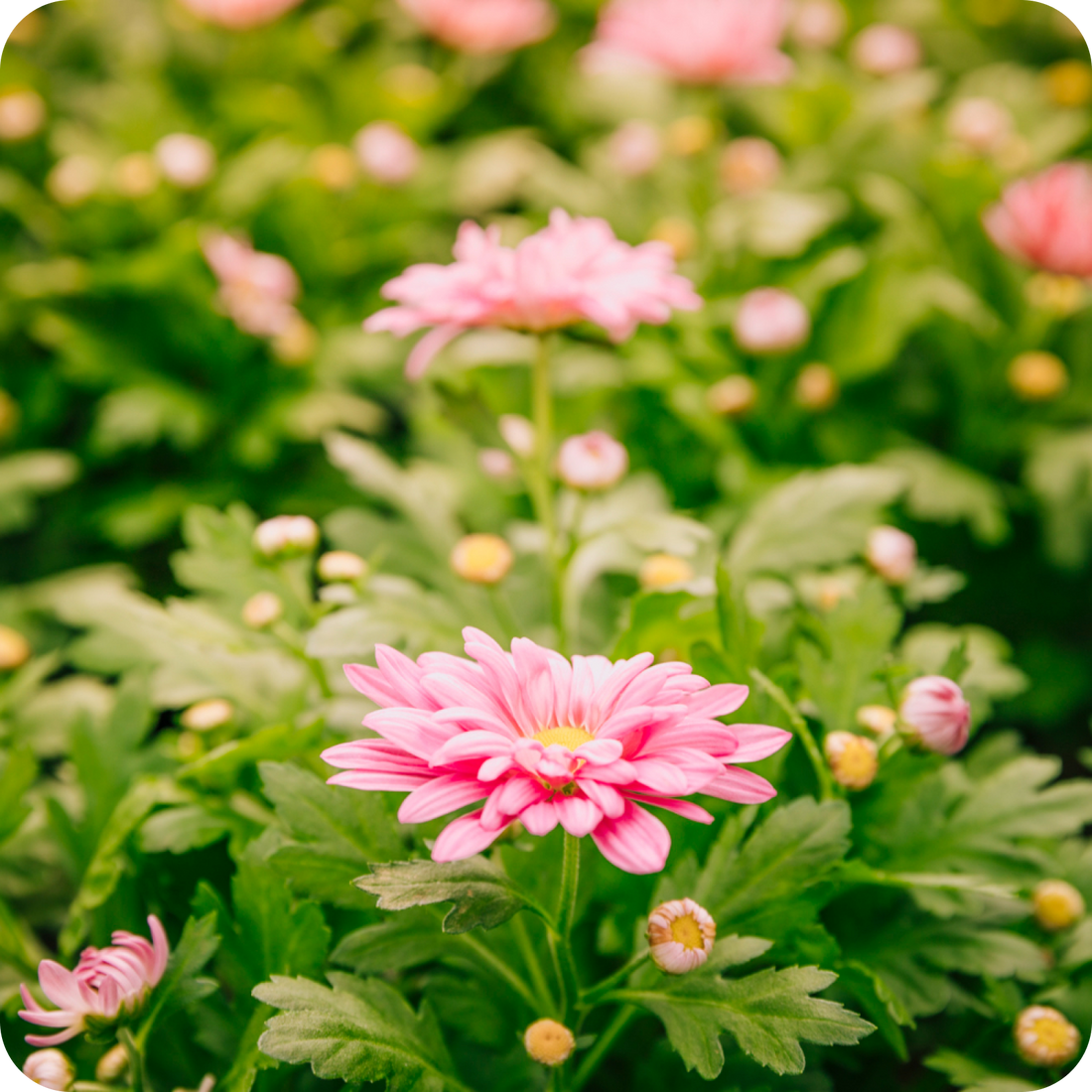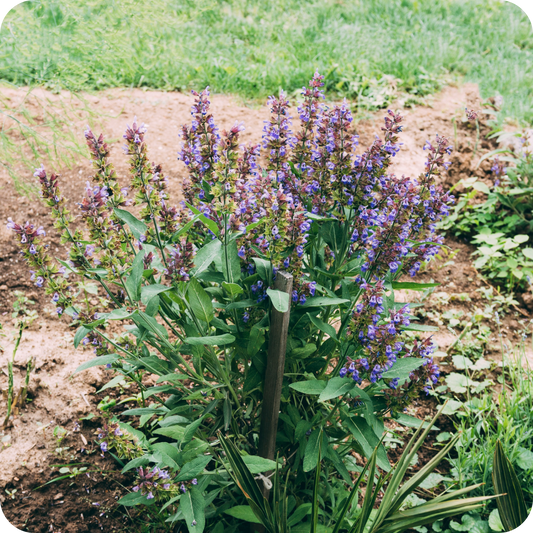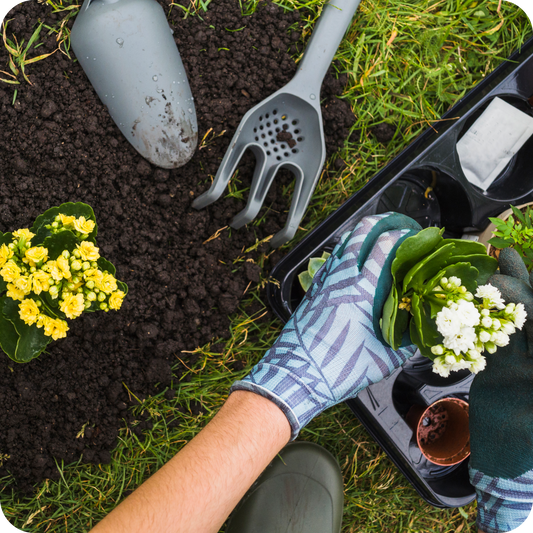Perennials are beloved for their ability to return year after year, providing continuous beauty and structure to gardens. Proper care throughout the seasons ensures their longevity and vibrant blooms. Here’s a comprehensive guide to nurturing your perennials year-round:
Introduction to Perennials
Perennials are plants that live for more than two years, with many flowering seasonally. Unlike annuals, which complete their life cycle in one season, perennials go through dormancy periods and return each year from their roots. This characteristic makes them a popular choice for gardeners seeking sustainable and long-lasting garden features.
Spring Care
As temperatures rise, perennials emerge from dormancy, signaling the start of their active growth period. Early spring is a crucial time for preparing your perennial garden for the growing season:
- Remove Winter Mulch: Clear away any mulch or protective coverings used during winter to allow the soil to warm up and new growth to emerge.
- Divide Overcrowded Plants: Perennials like hostas, daylilies, and irises benefit from division every few years to rejuvenate their growth and maintain plant health. Dig up the entire clump, separate into smaller sections with healthy roots and shoots, and replant in well-amended soil.
- Pruning and Deadheading: Trim back dead or damaged stems to encourage new growth. Deadheading spent flowers not only improves the appearance of the plant but also redirects energy into producing new blooms.
- Fertilize Lightly: Apply a balanced fertilizer or compost around perennials to provide essential nutrients for healthy growth. Avoid excessive nitrogen, which can lead to lush foliage at the expense of flowers.
- Inspect for Pests and Diseases: Check plants for signs of pests such as aphids or diseases like powdery mildew. Early detection allows for prompt treatment, minimizing damage to your garden.
Summer Maintenance
Summer is a period of vigorous growth and abundant blooms for many perennials. Proper care during this season ensures plants remain healthy and vibrant:
- Watering: Deep, infrequent watering is essential during hot summer months. Water early in the day to reduce evaporation and prevent fungal diseases. Ensure the soil is moist but not waterlogged, as excessive moisture can lead to root rot.
- Mulching: Apply a layer of organic mulch, such as shredded bark or compost, around perennials to conserve soil moisture, suppress weeds, and moderate soil temperature. Keep mulch away from plant stems to prevent rotting.
- Deadheading and Pruning: Remove spent blooms regularly to prolong flowering and encourage new buds. Prune back leggy growth or floppy stems to maintain a compact, tidy appearance and improve air circulation around plants.
- Supporting Tall Perennials: Stake or provide support for tall or floppy perennials to prevent them from bending or breaking under the weight of flowers or during summer storms.
- Fertilization: If necessary, apply a light application of fertilizer to perennials that show signs of nutrient deficiency or slow growth. Follow recommended dosage rates and avoid over-fertilization, which can lead to excessive foliage at the expense of blooms.
Fall Preparation
As temperatures cool and daylight decreases, perennials begin to prepare for dormancy. Fall is the ideal time to prepare your garden for the coming winter and set the stage for healthy growth in the next growing season:
- Cutting Back Perennials: Trim back spent foliage and flowers to tidy up the garden and remove potential overwintering sites for pests and diseases. Leave some seed heads for winter interest and to provide food for birds.
- Dividing and Transplanting: Fall is an excellent time to divide overcrowded perennials and transplant them to new locations in the garden. Dividing helps rejuvenate plant vigor and prevents overcrowding, while transplanting allows you to rearrange your garden layout or fill in empty spaces.
- Mulching and Protecting Roots: Apply a thick layer of mulch around perennials to insulate the soil and protect roots from freezing temperatures. Use organic materials like straw, shredded leaves, or pine needles, avoiding heavy mulches that can smother plants.
- Soil Amendments: Amend soil with compost or well-aged manure to improve fertility and soil structure. Work amendments into the top few inches of soil around perennials or apply as a top dressing.
- Winterizing Tender Perennials: In colder climates, protect tender perennials by mulching heavily around their base or covering them with frost blankets or inverted pots. This extra insulation helps prevent frost damage and ensures plants survive the winter months.
Winter Care
Winter is a period of dormancy for perennials, during which they conserve energy and prepare for the next growing season. While perennials are generally hardy and resilient, some winter care practices can help them withstand harsh conditions:
- Mulching for Insulation: Maintain a layer of mulch around perennials to protect roots from freezing temperatures and temperature fluctuations. Monitor soil moisture levels and water plants during dry periods, especially if there's little snow cover.
- Pruning and Maintenance: Limit pruning during winter to removing dead or damaged branches. Pruning stimulates new growth, which is vulnerable to frost damage. Wait until late winter or early spring when the risk of frost has passed before conducting major pruning.
- Monitoring for Pests and Diseases: Inspect plants periodically for signs of pests or diseases, such as chewed leaves, discolored foliage, or unusual growths. Treat infestations promptly with appropriate organic remedies to prevent them from spreading to healthy plants.
- Winter Wildlife Protection: Install physical barriers or deterrents to protect perennials from wildlife, such as deer or rabbits, that may browse on tender foliage during winter when food sources are scarce.
- Planning for Spring: Use the winter months to plan and prepare for the upcoming gardening season. Research new plant varieties, update garden designs, and order seeds or plants for spring planting. Consider starting seeds indoors for early-season vegetables or flowers.
Year-Round Maintenance Tips
To maintain healthy and vibrant perennials year-round, consider incorporating these additional maintenance tips into your gardening routine:
- Regular Soil Testing: Conduct soil tests annually to assess nutrient levels, pH balance, and soil structure. Adjust soil fertility and pH as needed to ensure optimal growing conditions for perennials.
- Integrated Pest Management (IPM): Implement an integrated pest management strategy that combines cultural, biological, and mechanical control methods to manage pests and minimize reliance on chemical pesticides. Encourage natural predators like ladybugs or beneficial nematodes to control pest populations.
- Companion Planting: Companion planting involves grouping plants together that benefit each other by attracting pollinators, repelling pests, or enhancing soil fertility. Research companion planting combinations that complement your perennial garden and support plant health.
- Crop Rotation: Rotate perennial crops or plant families in different garden beds each year to reduce soil-borne diseases, improve soil structure, and optimize nutrient availability. Rotate crops like tomatoes with legumes or leafy greens to maintain soil health and fertility.
- Water Conservation: Practice water-efficient gardening techniques, such as using drip irrigation systems, collecting rainwater in barrels, or planting drought-tolerant perennials. Mulch around plants to retain soil moisture and reduce water evaporation, especially during hot summer months.
- Seasonal Garden Tasks: Create a seasonal gardening calendar or checklist to track essential tasks like planting, pruning, fertilizing, and harvesting throughout the year. Adjust tasks based on local climate conditions, frost dates, and plant growth cycles.
- Continuous Learning and Improvement: Stay informed about current gardening trends, best practices, and new plant varieties through books, gardening magazines, online resources, and local gardening workshops or seminars. Share knowledge and experiences with fellow gardeners to enhance your gardening skills and expand your plant repertoire.
By following these comprehensive guidelines and incorporating year-round care practices into your gardening routine, you can ensure your perennials thrive, bloom abundantly, and provide years of enjoyment in your garden landscape.



